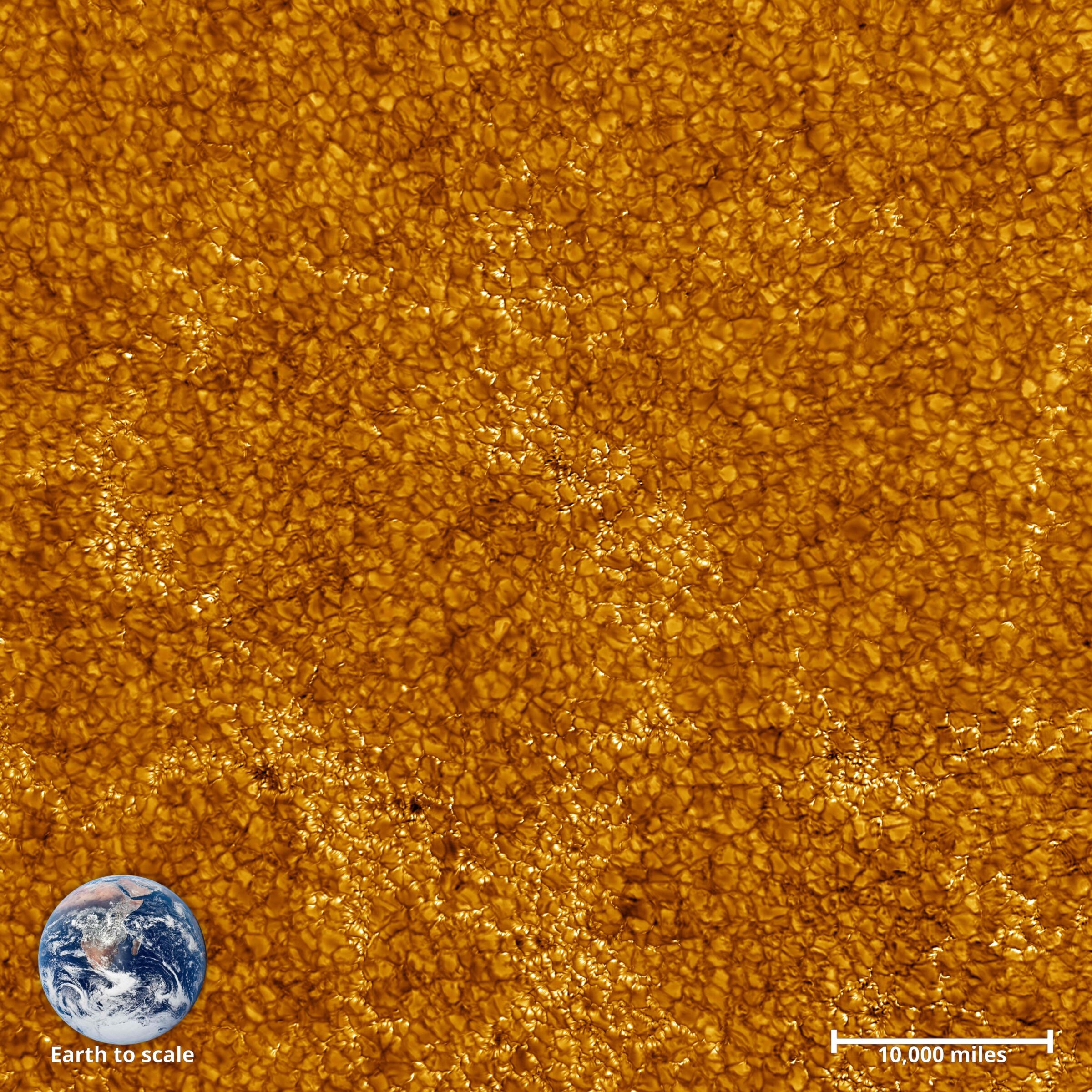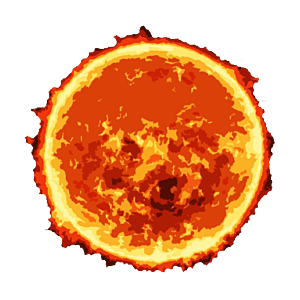The Downlink • Sep 09, 2022
Stars in the making
Space Snapshot

The world’s most powerful solar telescope is now operational, and it’s already blowing our minds. This image from the National Science Foundation’s Daniel K. Inouye Solar Telescope in Hawai’i shows a region of the surface of the Sun 82,500 kilometers across. The Earth is overlaid for scale, really driving home just how huge this area is. Image credit: NSO/AURA/NSF.
You love space, now take action
This weekly newsletter is your toolkit to learn more about space, share information with your friends and family, and take direct action to support exploration. Anyone can subscribe at planetary.org/connect to receive it as a weekly email.
Mission Briefings


JWST imaged never-before-seen young stars in the Tarantula Nebula. The infrared space telescope peered through clouds of cosmic dust to see tens of thousands of newly formed stars, as seen in this stunning new image. The stars are still in the process of collecting mass from the nebula’s dust and gas. Image credit: NASA, ESA, CSA, STScI, Webb ERO production team.

South Korea’s Danuri lunar orbiter is on its way to the Moon, via the Sun. The spacecraft recently swung back toward the Moon from the Sun-Earth L1 Lagrange point, about 1.5 million kilometers (about 932,000 miles) from Earth. Traveling directly toward the Moon would be quicker, but leveraging the Sun’s gravity on this longer route allows for better fuel efficiency. Danuri should arrive in lunar orbit on Dec. 16, and will begin its scientific mission in January.

A study has found DNA mutations in astronauts’ blood. The study, published in Nature Communications Biology, compared blood samples from 14 of NASA’s space shuttle astronauts before and after spaceflight. The post-spaceflight samples showed higher rates of mutation in blood-forming stem cells. Although the overall mutation rate wasn’t dangerous, longer-term exposure to the conditions of deep space could lead to higher rates.
From The Planetary Society


Artemis I has been delayed, but you don’t have to delay learning about it! This week we have two podcast episodes about the Artemis program. First, Planetary Radio host Mat Kaplan traveled to Florida for the would-be launch on August 29, capturing the excitement and disappointment of those gathered to watch this groundbreaking mission take off in this week’s episode of Planetary Radio. Next, listen to the latest Space Policy Edition to get the lowdown on the Artemis Accords from Mike Gold, former associate administrator of Space Policy and Partnerships at NASA, who helped draft these international standards for peaceful, cooperative exploration. Pictured: The Sun rising beyond the countdown clock on August 29 at the Kennedy Space Center. Image credit: Mat Kaplan/The Planetary Society.

The Planetary Academy Kickstarter has exceeded its launch goal! More than 560 backers have already supported the Kickstarter to get our kids membership program off the ground, exceeding the initial $50,000 goal. Thank you to all who have supported this program! And if you haven’t yet, there are still 20 days left in the campaign so you’ve got plenty of time to get on board and help us to meet our first stretch goal of $75,000! Check out the program and the awesome rewards for backers who support it.
What's Up

Look for Saturn low in the eastern evening sky after sunset. Jupiter rises in the early evening and Mars before midnight. The full Moon on the night of Sept. 10 will be right by Jupiter. Get the full scoop on the rest of September's night skies.
Wow of the Week

If you love looking at JWST’s images, try listening to them! NASA recently released a collection of audio tracks that complement JWST photos. Musicians were tasked with mapping the telescope’s data to sound, using music to highlight important details in the images and data. The audio tracks are primarily designed to support blind and low-vision listeners, but will engage and inspire just about any listener who tunes in. Pictured: An illustration depicting the sonification of the images. Image credit: NASA, ESA, CSA, Joseph Olmsted (STScI).
Send us your artwork!
We love to feature space artwork in the Downlink. If you create any kind of space-related art, we invite you to send it to us by replying to any Downlink email or writing to [email protected]. Please let us know in your email if you’re a Planetary Society member!


 Explore Worlds
Explore Worlds Find Life
Find Life Defend Earth
Defend Earth


